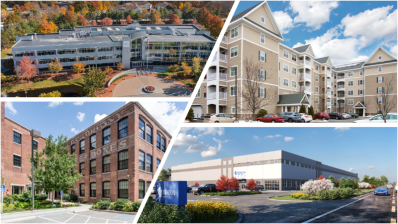
You see the term “Value add” often applied to the profile of commercial real estate assets. In fact, many offerings on the CrowdStreet Marketplace carry this tag. But what does this term really mean? Investors often ask me, “Can operators truly add value or are they simply riding the upswing of a real estate cycle to generate profits?”. That effect is largely a function of cap rate compression, a topic we will discuss in a separate article. While cyclical effects can provide wind at the back of an operator it is, indeed, possible to create real value in CRE assets. In certain instances, the potential to create or “add” value is substantial.
In this article, we explain how commercial real estate operators can potentially create value in commercial real estate assets and provide an illustrative example as well as a case study.
Growing NOI is a key to adding value
Creating value starts with identifying an asset that has the potential for a dramatic increase in rental rates or occupancy, a dramatic decrease in operating expenses, or a blend of these three factors. Commercial real estate assets are sensitive to Net Operating Income (“NOI”) and NOI is sensitive to three things: 1) occupancy 2) rental rates and 3) operating expenses. Therefore, If an operator can identify a commercial real estate asset that it can dramatically improve one or more of those three factors, then that operator has the potential to boost NOI, increase the asset value and thus create or “add” value.
Assets that have this potential typically have current deficiencies, which prevent the asset from realizing its potential. The key is to find situations where, after study, the operator determines it has the ability to cure the deficiencies that currently plague the property, which will unlock the opportunity for value creation. If the operator succeeds in curing those deficiencies, then the asset can become more competitive in the market. Increasing rental rates and occupancy and/or decreasing operating expenses is now simply a matter of good execution.
The following example illustrates this point:
Assume that a real estate operator purchases a 100,000 SF office building for $20 million that is only 60% leased and has a tired lobby and dated elevators. Because of the low current occupancy, the property’s NOI is impaired. However, if the issues with the property were cured, it has strong potential due to its location. This is a classic “value-add” office scenario.
The operator purchases the building at a 5.5% going-in cap rate, which means there is currently $1.1 million of NOI:
$20,000,000 (purchase price) x 5.5% (cap rate) = $1,100,000 (NOI)
The operator then proceeds to invest a total of $2.5 million into the property, allocated as follows:
| Project |
Amount |
| Lobby renovation |
$600,000 |
| HVAC repairs |
$250,000 |
| Elevator refurbishment |
$250,000 |
| Tenant Improvements |
$1,000,000 |
| Leasing commissions |
$400,000 |
| Total |
$2,500,000 |
By completing the renovations and communicating to the market that the building is able to fund tenant improvements and pay leasing commissions, the operator is able to lease up the property to full stabilization (95% occupancy) and double NOI to $2,200,000 over a period of 18 months. Keep in mind that, as occupancy increases, it will have a dramatic effect on NOI since much of a building’s operating costs are fixed. This is why increasing occupancy from 60% to 95% can double NOI.
If a fully stabilized office building in the submarket is valued at a 7% cap rate, the building is now worth $31.4 million:
$2,200,000 (New NOI) / 7% (Stabilized Cap Rate) = $31,428,571
If the full project cost of $22.5 million ($20 million purchase + $2.5 million renovation) was funded through 65% debt and 35% equity, then imputed equity has more than doubled:
| Debt & Equity (Acquisition) |
Debt & Equity (Stabilization) |
|
| Equity |
$7,875,000 |
$16,803,571 |
| Debt |
$14,625,000 |
$14,625,000 |
| Total |
$22,500,000 |
$31,428,571 |
Thus, in this example, with a $2.5 million investment into a $20 million value-add office property, the operator is able to create over $8.9 million of value in less than two years. The net result is that investors have earned a 2.13x equity multiple (less transaction costs and sponsor promote).
Since the example above is hypothetical, you might wonder if this type of scenario actually plays out in real life? The answer is it can, and I will describe one such real life scenario.
A Case Study in adding value
During my tenure as an acquisitions officer for a CRE operator, my primary duties consisted of identifying CRE assets that had strong potential to create value and then capitalize and acquire them on behalf of my company. Upon acquisition, our company’s asset management team would then set about executing the business plan to actually create and, ultimately, realize the value that the acquisitions team had underwritten.
In 2013, I identified a mid-rise office tower in the Bay Area that I felt had the potential for substantial value creation. At the time, the property was 68% leased with rental rates that were some of the lowest in the submarket. Not surprisingly, it had a reputation as a mediocre and challenged property.
This deal sounds bad from the outset, so where is the opportunity to create value? After conducting due diligence, I learned the following:
-
Location – The property was in a location that, in years past, was considered inferior since the nicer office towers in the submarket were located to the east of this property near the Bay. However, this property was located close to the city’s downtown and a trend was now in motion amongst office users in wanting to be close to downtown. While this property was not near other nicer glass towers with large parking lots, it was near a lot of great ethnic restaurants. Millennials, as you can imagine, like walking to a cool Burmese restaurant to eat lunch a lot more than grabbing a sandwich in the sub-par deli that you can find on the ground floor of most office buildings. And sub-par delis were practically the only walkable food option in those nicer buildings by the Bay.
Finally and most importantly, this building was a short distance from Caltrain, the peninsula’s public transit rail system. As the Bay Area continues to grow, traffic grows increasingly worse. As a result, ridership on Caltrain has increased substantially since those nicer glass towers were constructed near the Bay. As Caltrain ridership has grown, desire amongst office tenants to be near Caltrain has also grown in recent years. Since my deal needed to be leased up, I needed to attract new tenants, which in the Bay Area means attracting tech companies. With a location that had superior access to Caltrain and cool restaurants within walking distance, I had a good starting point.
-
Curable physical deficiencies – While location is hugely important, it’s not everything. After all, the building was currently 68% leased, so if there weren’t other problems wouldn’t the asset have already attracted more tenants? The answer is, yes, there were other problems – the key is that they were fixable.
The property had a few glaring deficiencies in its current state that needed to be addressed in order to lease it up. First, to understand this property, it’s important to know that it has two types of space 1) a 12-story tower and 2) four stand-alone one and two-story buildings that surround the tower. The tower space offered great views of the bay but the main problem was that it had eight foot ceilings. In a modern office environment, not only do eight foot ceilings not attract tenants, it repels them.
Attracting tech tenants into the tower would require removing the ceiling grids, abating the asbestos that was currently sealed above the ceilings and finishing out an exposed ceiling that would increase the ceiling heights to 11 feet. This process would be expensive ($56/SF) and, prior to 2013 when I acquired the property, the cost of removing the ceiling grids was not justifiable given the prevailing rental rates. However, rental rates on the peninsula were on the upswing. By the time the property was marketed for sale, rental rates were just reaching the point where spending the $56/SF to remove the ceiling grids made sense. It’s also important to note that the types of tenants that I was targeting were the exact types of tenants that would like raw look of an exposed ceiling. Had I been targeting law or accounting firms, the plan would be flawed since those tenants still prefer ceiling grids.
The other current deficiency at this property was in the surrounding standalone one and two-story buildings, which, at the time, were mostly vacant. The original occupant of the property was a regional bank. The bank’s offices were in the tower and the original use of the surrounding buildings was to process checks. This is significant for two reasons: 1) These outbuildings had high ceilings to facilitate an industrial type use – up to 16’ in some of them and 2) they had tons of power since they used to be filled with heavy machinery. Once the bank vacated, these surrounding buildings were converted to more conventional office uses but they struggled to lease. They were considered the worst spaces at the property because they lacked the security offered in the tower and had no views.
However, by 2013 things were changing. Creative office users were now the dominant tenant in the market and they wanted high ceilings, which these buildings had in spades. In addition, we could leverage the massive readily available power to attract tech users that had heavy power requirements. Finally, creative users love an office with its own exterior entrance since those workers often ride a bicycle or bring a dog to work with them. Try rolling a bicycle or walking a dog through a traditional office lobby and you’ll quickly experience why creative users like ground floor exterior access. So, it appeared that the surrounding buildings at this property had the potential to become cool creative space and actually command a premium over the tower space. However, substantial money would need to be invested into window replacements and speculative tenant improvements. All of this work penciled given the most recent rent comps, but it was also costly enough to prevent the current owner from pre-funding in hopes of leasing the space. Therefore, the argument was strong that the surrounding buildings were fixable.
-
Parking – Finally, the property had a multi-level parking garage. Not all peninsula office workers ride Caltrain, so parking was still critical to attracting tenants. The parking ratio at the property was average when compared to the buildings near the Bay, but this property was near downtown. Having a parking garage with a property near downtown was a differentiator as some of the other competitive office properties in downtown locations had no parking. The buildings with no parking were inarguably better locations, but parking is a big enough deal that I believed I could get tenants to come to my location if they knew they could park for free rather than pay for off-site garage parking. However, the allure of free parking was only real if I offered the creative environment office tenants were seeking, so it intertwined with the tenant improvement plans.
Therefore, after conducting due diligence that included further vetting the leasing market and procuring a number of reports and pricing estimates that supported our cost assumptions, we seemed to have a strong thesis that the current ailments of the property were curable given adequate capital investment. Our capital partner also believed in our thesis, so we proceeded with the transaction and closed on the property.
After acquiring the property, the initial few months were rocky but our asset management team started renovating the surrounding buildings and commenced removal of the ceiling grid and abating the asbestos in one of the vacant upper floors of the tower. Over the ensuing months, the leasing traction emerged and my (now former) company was able to lease the property to over 90% occupancy in less than two years at rental rates that far exceeded our original estimates. The result was that NOI improved dramatically, which justified a much higher valuation for the property. This new valuation culminated in a recapitalization of the project within two years of our original acquisition date with a handsome return to the investors.
There’s no “I” in value add
So, yes, substantial value can be created in CRE assets but it requires a well-devised plan and a team that is capable of executing upon it. Opportunities for substantial value creation are not abundant but they do exist. In addition, certain operators are more adept at sensing them than others as some of the best opportunities are overlooked by the general market. Like most things in life, the home run deals in commercial real estate are often the ones where the business plan seems far fetched at acquisition but is so logical by the time of disposition.
Finally, keep in mind that, in the case study above, I was just the guy who stumbled upon a deal and formulated a plan. It was truly the team of property and asset managers, who worked day-in and day-out over those two subsequent years, that realized the potential value of the asset. As Chris Sacca (investor in Twitter and Uber) said, “Ideas are cheap, execution is everything”.
The CrowdStreet Marketplace includes value add commercial real estate offerings to help investors build portfolio diversity as they continue to increase their real estate investments. CrowdStreet also provides investors with a single dashboard to track and manage those investments.


